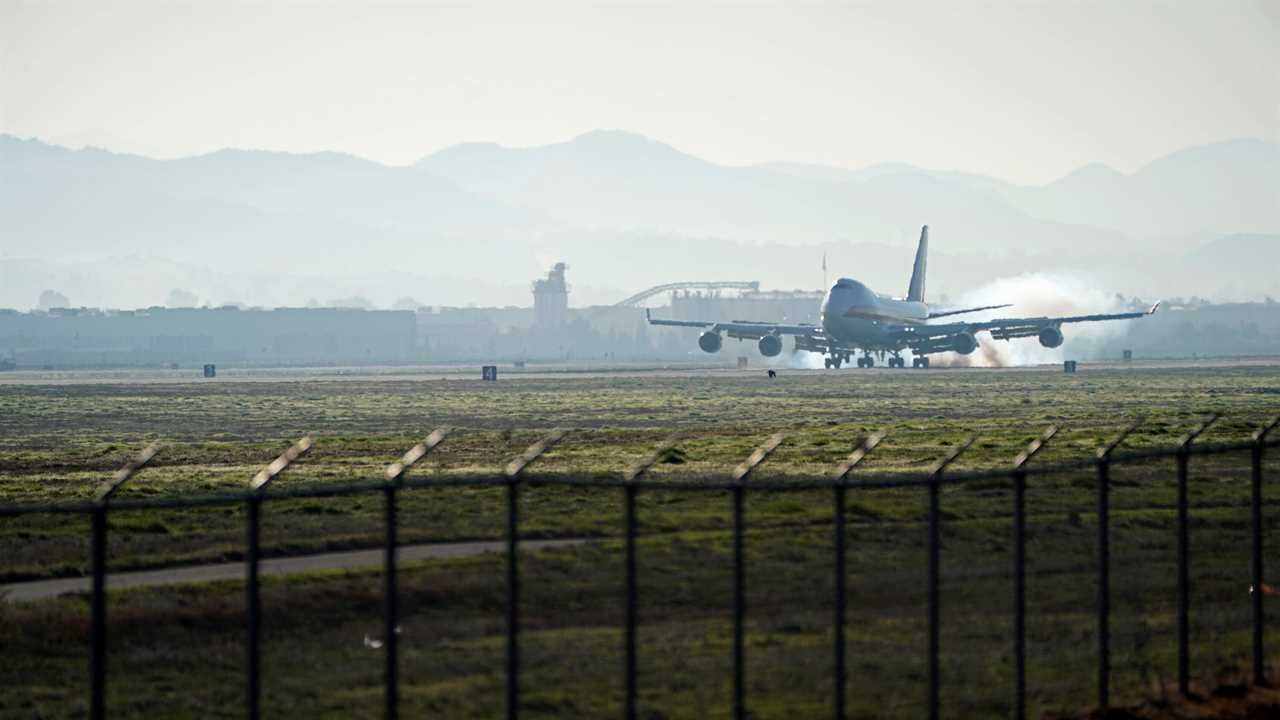
WASHINGTON — The government’s confused effort to retrieve Americans overseas during the early weeks of the coronavirus pandemic compromised the safety of the evacuees, federal employees and communities where they returned, according to a report published on Monday by Congress’s nonpartisan watchdog.
The effort was so dysfunctional that federal health agencies could not agree on the purpose or terms of the mission, contradicting one another about whether it should be classified as an evacuation or a repatriation.
The investigation by the Government Accountability Office concluded that the evacuation of Americans from China was badly hampered as different divisions in the Department of Health and Human Services argued over which was responsible.
The Government Accountability Office said three agencies in the department — the Centers for Disease Control and Prevention, the Office of the Assistant Secretary for Preparedness and Response and the Administration for Children and Families — “did not follow plans or guidance delineating their roles and responsibilities for repatriating individuals during a pandemic — an event these agencies had never experienced.”
The infighting undermined the earliest attempts to protect federal staff assigned to the mission and the Americans after they returned from China, where the coronavirus is believed to have originated.
The report, which took over a year to compile, built on previous reviews of the repatriation effort by health department lawyers and a whistle-blower complaint filed early last year. The department’s top lawyer concluded last April that federal health employees without adequate protective gear or training interacted with Americans quarantined at a base in California, validating the whistle-blower’s central complaint.
According to the report issued on Monday, the Administration for Children and Families, or A.C.F., began overseeing the repatriation of the evacuees. Then, lawyers at the Department of Health and Human Services determined that the flights from Wuhan, China, constituted an evacuation, not a repatriation, and were therefore the C.D.C.’s responsibility.
For that reason, A.C.F. officials said resources from the federal government’s repatriation program were not used. But the Health and Human Services lawyers’ decision was not communicated to the C.D.C., the report said, and Government Accountability Office investigators were not given an explanation of the distinction between repatriation and evacuation.
A focus of the report is the federal government’s response at March Air Reserve Base, near Los Angeles, where the health agencies functioned independently and without coordination, the Government Accountability Office said. As the A.C.F. prepared for the evacuees in late January 2020, the Office of the Assistant Secretary for Preparedness and Response was abruptly put in charge on the day they arrived.
The office’s incident management team “was not mobilized until after the flight landed and did not deploy to the site until Jan. 31,” the report said. That led to broad confusion about who was in charge, with Preparedness and Response officials believing they were there to support other agencies. Pentagon officials interviewed by investigators said that Health and Human Services employees “lacked an understanding of how to finance the effort, obtain proper clearances and manage the health and safety of the mission.”
Latest Updates
- More colleges mandate vaccination for students, including Columbia and Yale.
- Biden administration officials warn of the continued need for masks and distancing for now.
- Cuomo faces an inquiry over use of state resources for his pandemic book.
The report describes other significant missteps, some of which had already been made public. It cites last year’s report from Health and Human Services lawyers describing a scene at the base in which an A.C.F. official told Health and Human Services employees to remove personal protective gear at a meeting with evacuees to avoid “bad optics.”
The health agencies also struggled to stop those on the base from leaving in the absence of a federal quarantine order, which lasted several days, the report said. One person with the “potential to spread” Covid-19 tried to leave the base.
The investigators also wrote that federal health officials disagreed on which agency was responsible for infection control on the base, while the use of personal protective equipment was uneven among poorly trained federal employees there.
The dispute led to an almost comical bureaucratic tangle.
At first, A.C.F. and Preparedness and Response officials viewed the C.D.C. as the agency with more expertise and authority under a section of the federal government’s guidance on repatriation procedures related to Ebola. But C.D.C. officials told their colleagues that the section was not applicable to other diseases, and that the agency was not responsible for managing the employees of other agencies. Still, the C.D.C. offered training after it was requested.
“According to H.H.S., C.D.C. personnel on the ground provided inconsistent and informal infection prevention and control guidance for the first three days of the mission because of a lack of clear roles,” the report said.
The investigators noted that the Department of Health and Human Services did not feature repatriation in its planning exercises for a pandemic and therefore was not equipped to coordinate such an effort. That could hamper responses to a future pandemic.
“Until H.H.S. conducts such exercises, it will be unable to test its repatriation plans during a pandemic and identify areas for improvement,” the report noted.
The Department of Health and Human Services agreed with the recommendations, the Government Accountability Office said.
Did you miss our previous article...
https://trendinginthenews.com/usa-politics/how-much-sway-does-the-nra-still-have






